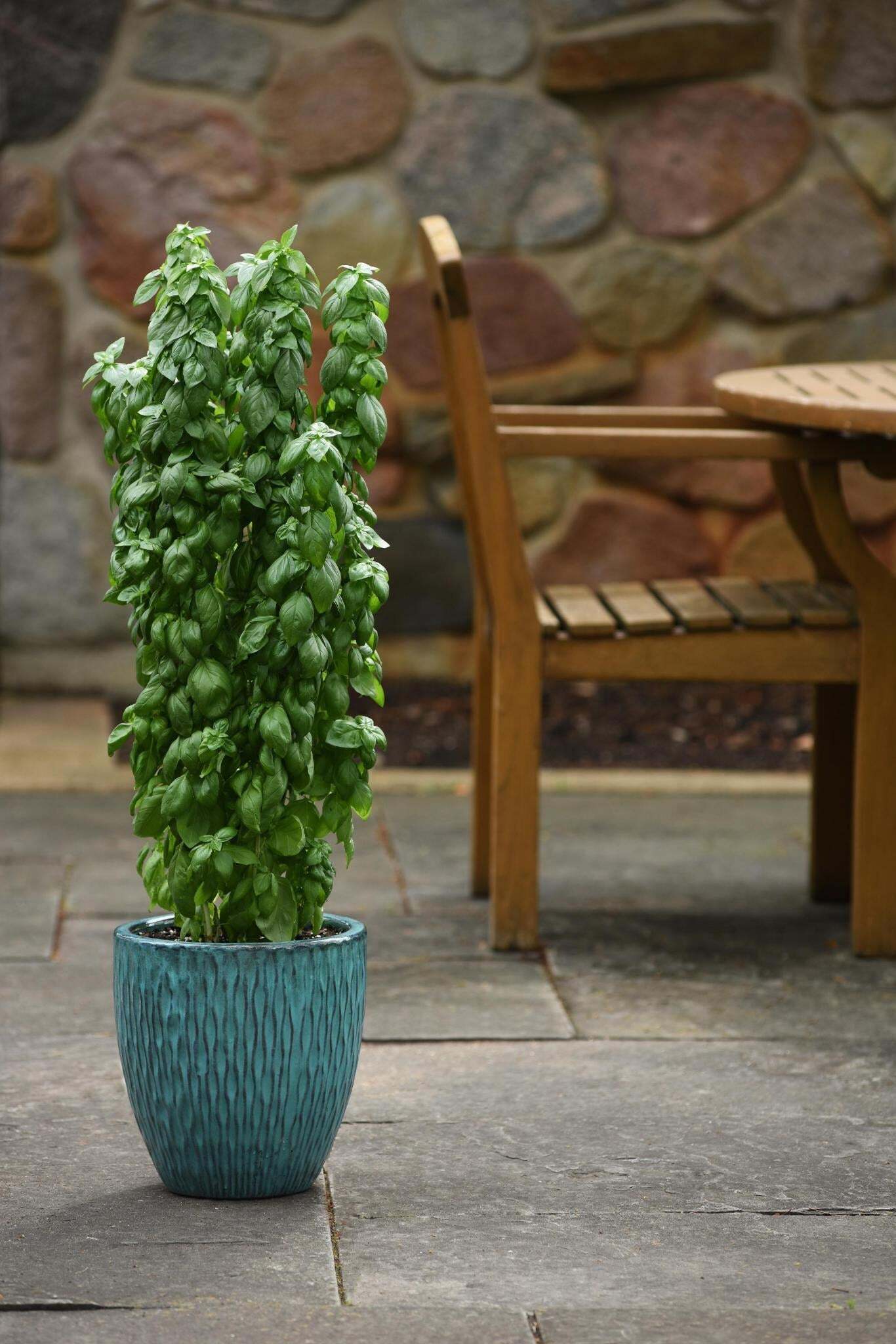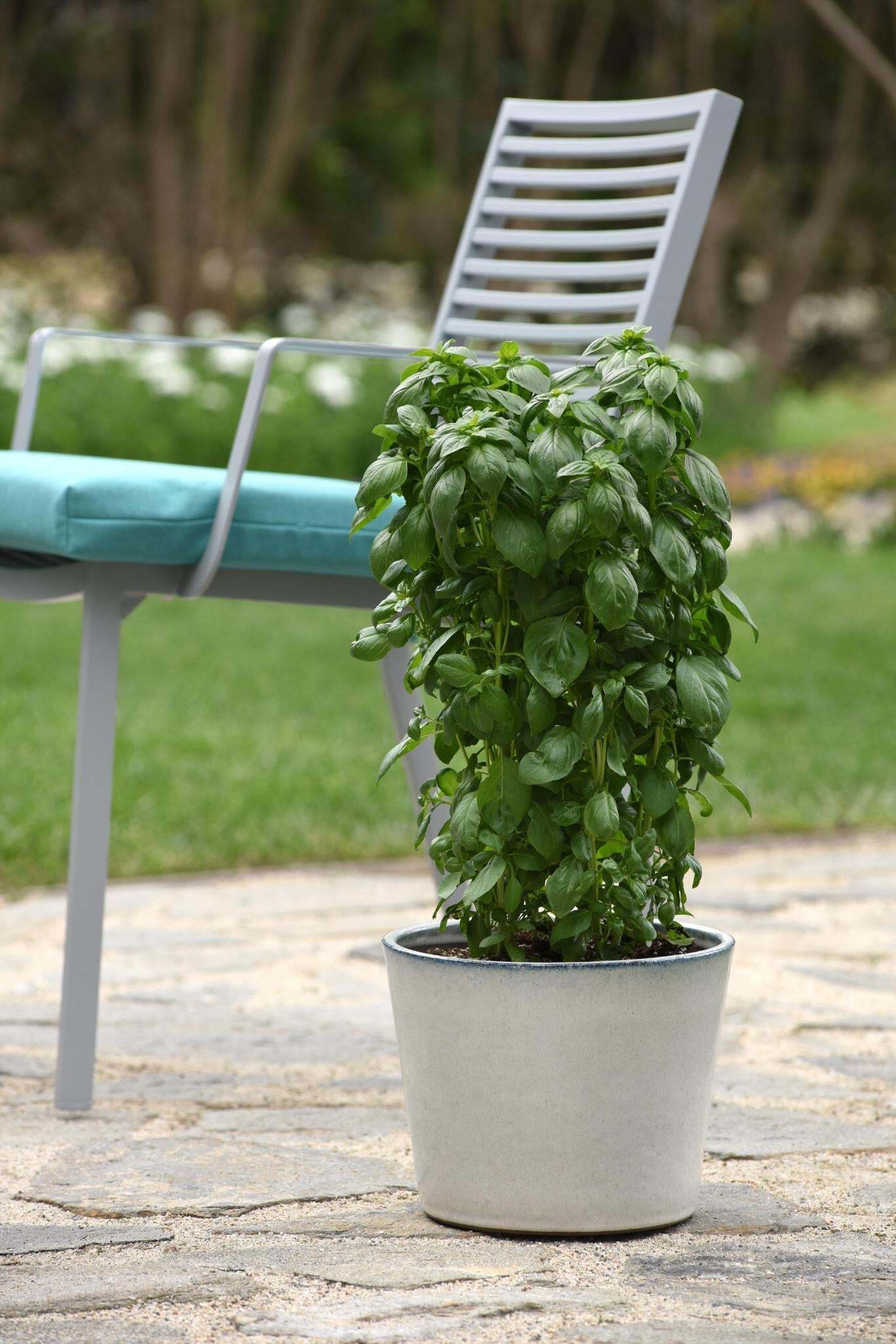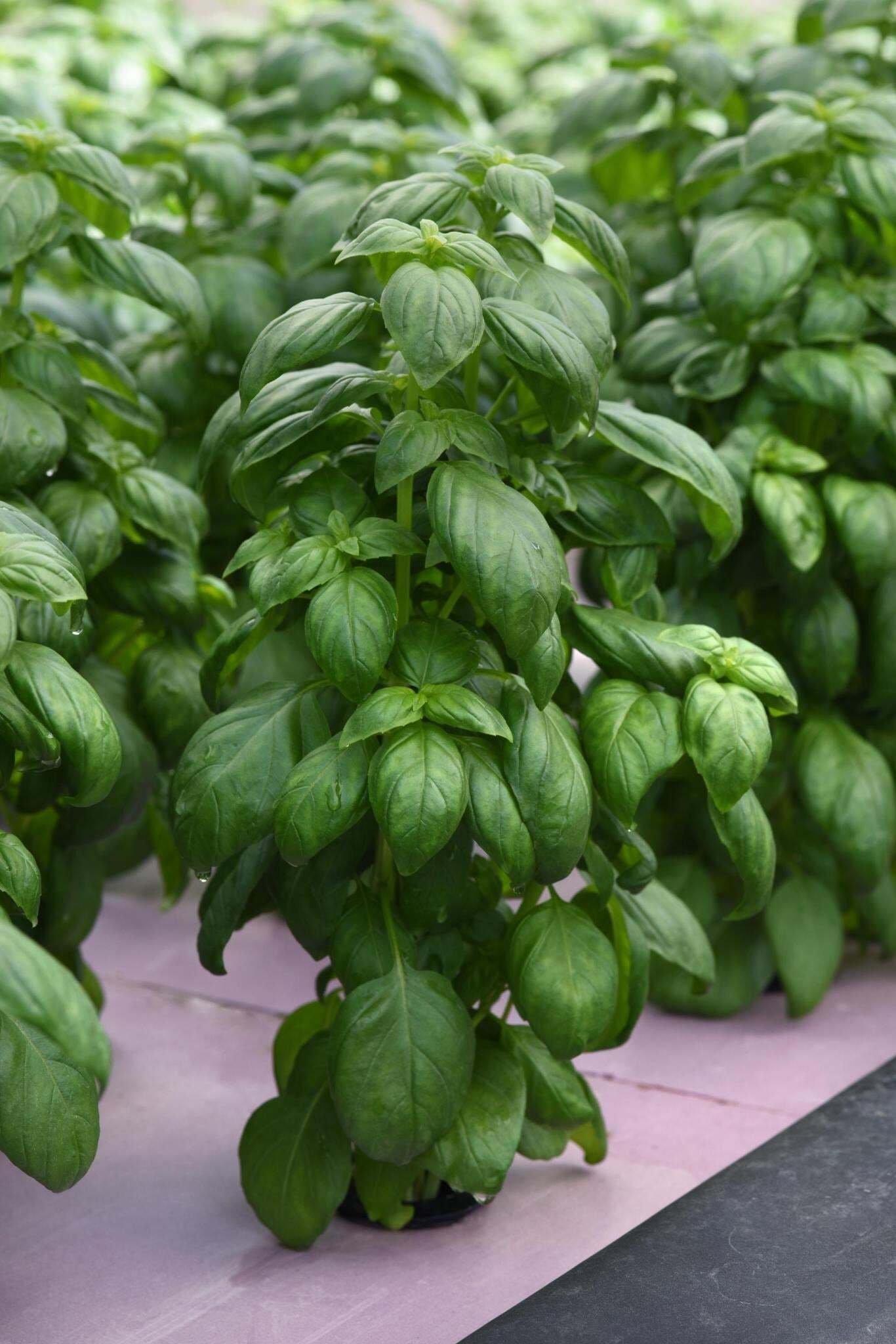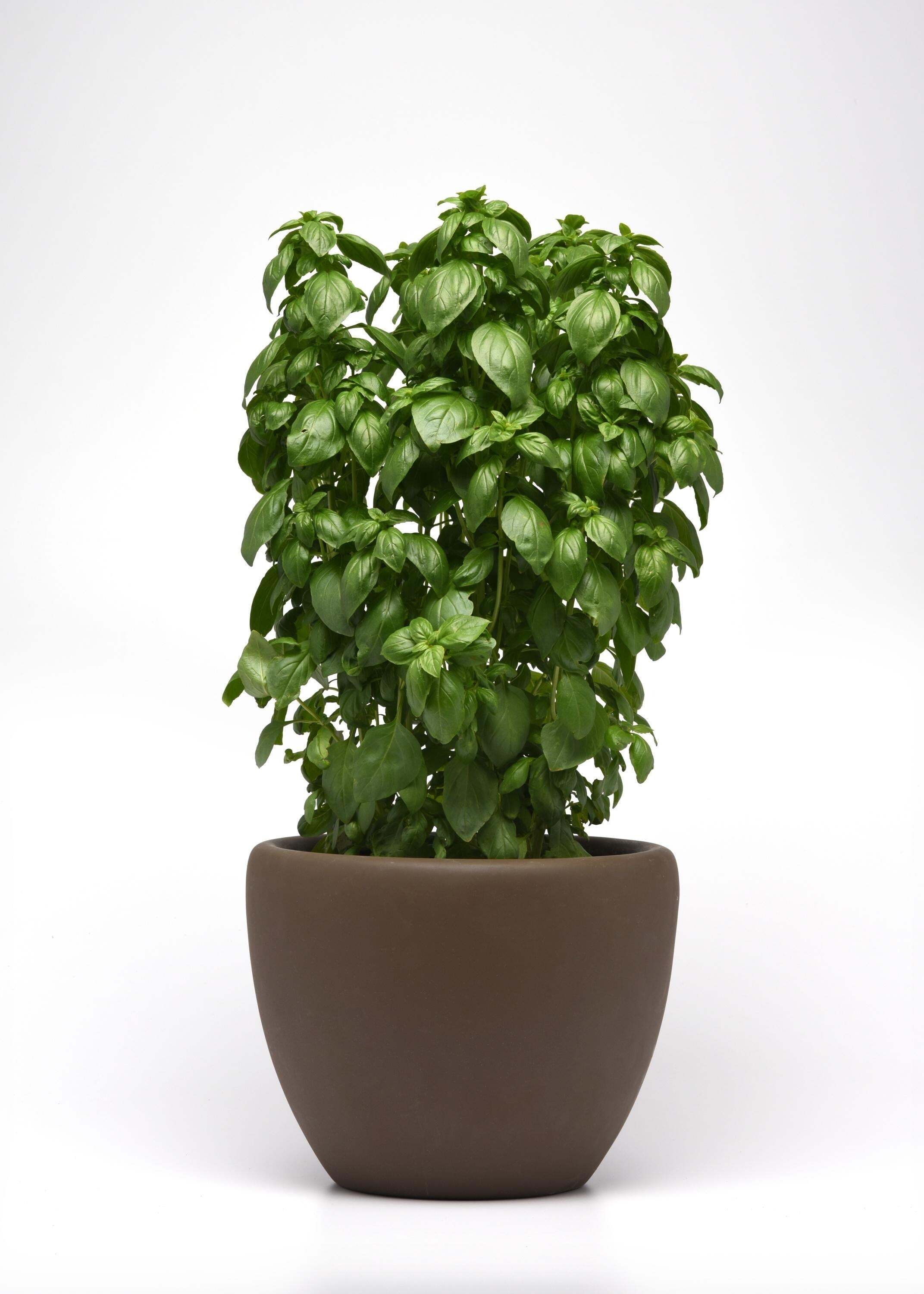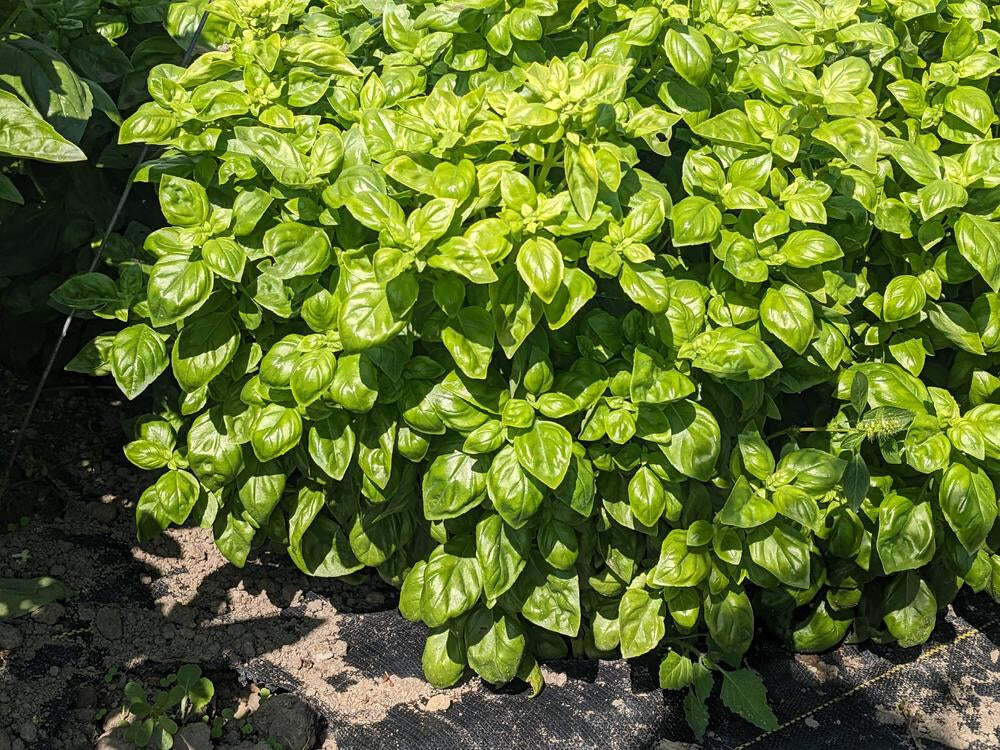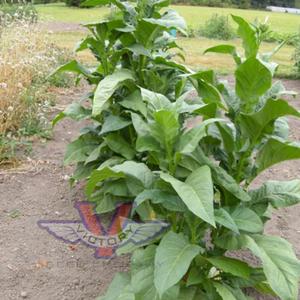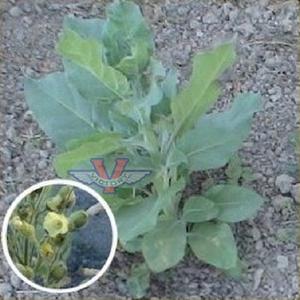




Basil, Everleaf Emerald Towers
Ocimum basilicum
Price: $3.95
SKU: 40005001Basil
Everleaf Emerald Towers
This gorgeous, dark green, glossy leafed, columnar habit basil is ideal for any garden. Traditional Genovese flavor is perfect for eating fresh in caprese salad or chopped fresh in recipes. Plus, it flowers late in the season, for huge harvests of leaves throughout Summer.
This is a well-branched variety with a traditional Genovese flavour and short internodes.
It makes a beautiful towering plant with huge harvest potential for in-ground, container and hydroponic use. Flowers 10 to 12 weeks later than standard basil.
It makes a beautiful towering plant with huge harvest potential for in-ground, container and hydroponic use. Flowers 10 to 12 weeks later than standard basil.
Spacing: 6-12"
Height: 24-36"
Width: 8-12"
Days to maturity from direct seed: 45-60
Each packet contains 20 seeds.
Harvest, Storage and Using Your Basil
First thing in the morning, when the essential oils of the plants are most concentrated, harvest mature leaves. A dual purpose practice is to regularly pinch back the growing tips of your plants. These trimmings can be used in the kitchen and the pruning of the growing tips stimulates branching which will result in sturdy, bushier plants. Whatever your harvesting practice, do not reduce your plant's foliage by more than one-third and allow it to recover before harvesting from the same plant again. After harvesting and since basil is a leafy green plant, encourage growth by feeding a good, balanced fertilizer.
The essential oils (the components that provide the flavors and fragrance) are as noted previously, quite fragile. That is, they are easily lost. Harvesting at their peak in the morning is the first step but how you store it is also critical.
For long-term storage, basil leaves can be dried and used as seasoning. In fact, many recipes call for dried basil rather than fresh, as the flavor is more subtle and complimentary. However, the best way to store basil past the fresh use stage, while preserving full-flavor, is to do what Denise does. She takes the leaves and either chops them or runs them through the food processor. As quickly as possible, they are then placed into ice cube trays and frozen. Once solid, she removes them and either stores them in freezer bags or for longer term, in vacuum sealed bags. Then throughout the year we can thaw and enjoy "fresh" basil in dishes, drop a cube into sauce or soups, or make into pesto.
During the growing season, you can take your clippings, wrap the cut ends in a damp paper towel and store in a plastic bag in the refrigerator. They will last a week or two using this method but we generally either just go out and harvest what we need, fresh, or if it is a period where we have an abundance, process for long-term storage as described.
Customer Reviews:
Do you have experience with this one? 📝 📣 Write a review!
★★★★★ Doesn't go to flower until fall!! No Bolt!!
By LM StRange (Maine) on March 23, 2025
By LM StRange (Maine) on March 23, 2025
OH my GOODNESS! I have been growing this basil for 4-5 summers now. It holds up to the heat and does not go to flower until quite late in the season. Nice upright growing habit. Have grown some as gifts for our daughters in law, sisters and friends. It's satisfying to have a plant so successful. My little grandchildren like to have things that are easy to grow, it's so encouraging to them.
